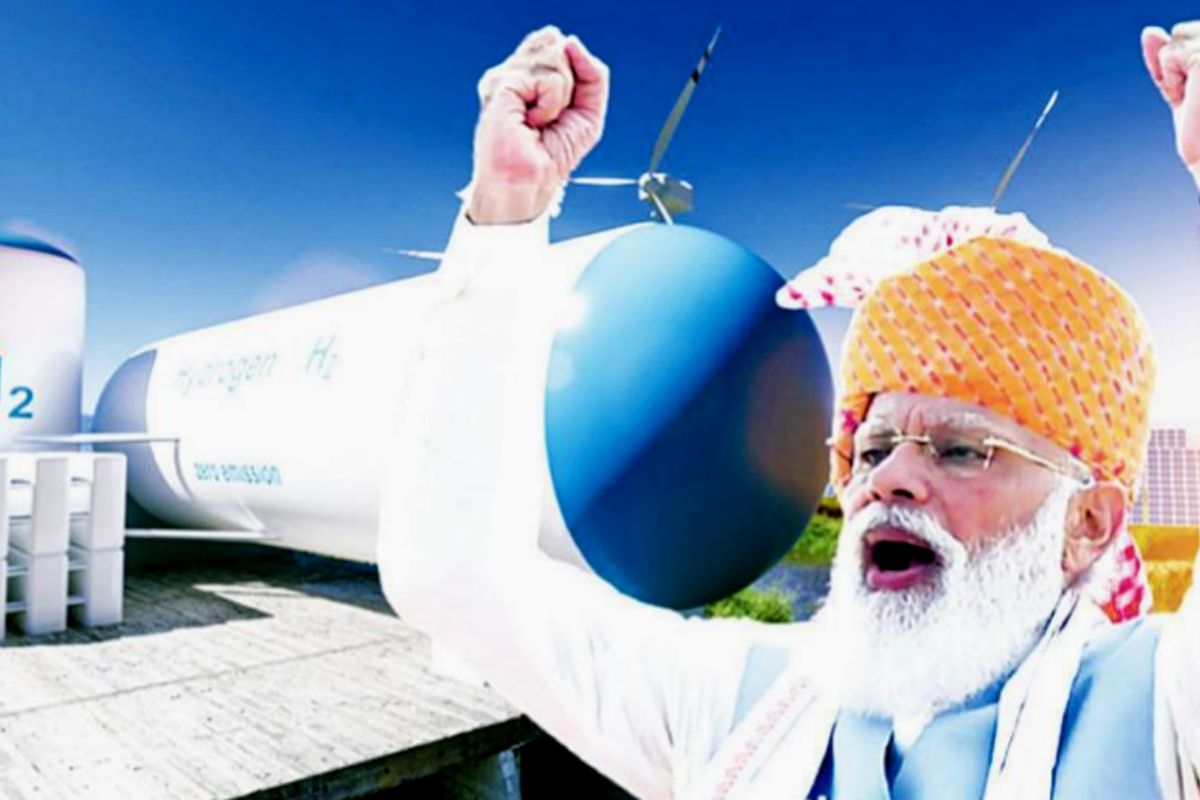German economy forecast to lag eurozone growth until 2026
The German economy is expected to significantly underperform the eurozone average until at least 2026, according to the European Commission's Autumn Forecast released on Friday.
Public participation and engagement in policymaking around green hydrogen is equally important to ensure its diffusion especially in transportation sector.

SNS
Announcement of the ‘National Hydrogen Mission’ on 15 August 2021 will be considered as one of the milestones in the energy transition history of India. The shift to hydrogen can fetch positive results in terms of reduced emissions, reduced dependence on imported fuel and therefore a reduced financial and ecological burden. Globally, hydrogen energy has gained much needed attention as a means to achieve NetZero targets and to fulfill increasing energy demands. The Covid-19 pandemic, dwindling economies due to the RussiaUkraine conflict, fear of economic recession and disrupted supply chains pose serious threats to various measures to reduce emissions. It is disheartening to see that countries have witnessed short-term shift towards coal again which can affect climate mitigation policies and programmes.
India is using hydrogen as fuel and feedstock in various sectors, but a major shift towards hydrogen in refining petroleum, ammonia industry, power sector, feedstock for methanol production, steel industry, long haul freight and heavy-duty vehicles is needed to remain in the race to reach net-zero targets. The International Energy Agency (IEA) projects an increase in hydrogen demand from 287 mt (sustainable development scenario) to 528 mt (Net Zero Scenario) which can result in mitigation of 1.6 – 3.5 mt of GHGs emissions annually by 2050. In 2020, a total of 900 Mt of carbon emissions was emitted due to hydrogen production globally (IEA, 2021). Thus, the need of scaling up green hydrogen is quite clear.
Hydrogen can be produced by many ways and according to its production mechanisms, it is categorized into various shades (i.e. blue, green, and grey). Green hydrogen is one of the best bets to make India a hydrogen-based economy. It uses renewable energy like solar or wind in electrolysis of water for hydrogen production and thus the cleanest of them all. In February 2022, the Government of India floated the Green hydrogen policy 2022 which aimed to make India a hub of production and export of green hydrogen. Grey hydrogen uses fossil fuel i.e natural gas, coal and methane, for hydrogen production which leads to carbon dioxide emissions in the atmosphere and blue hydrogen is produced using natural gas using steam reforming method. During this method, hydrogen and carbon dioxide are produced. This carbon dioxide is captured and stored for further use.
Advertisement
Other not-so prominent shades of hydrogen include pink, turquoise, brown, yellow, and white. Pink hydrogen is produced by electrolysis powered by nuclear energy. Turquoise hydrogen uses methane pyrolysis process using natural gas. Brown hydrogen uses steam methane reforming process powered by coal which produces carbon dioxide emissions. Yellow hydrogen uses solar energy for electrolysis. White hydrogen is produced from natural underground deposits and red hydrogen. The recently published NITI Aayog report ‘Harnessing green hydrogen: opportunities for deep decarbonization in India’ gives a roadmap for achieving targets of decarbonizing the economy by charting out near term, medium term and long-term policy pathways.
Emphasis is on decarbonizing hard-to-abate sectors which was earlier difficult to decarbonize due to technological limitations, unavailability of suitable fuels and high price involved in decarbonization. The sectors include petroleum, ammonia industry, power sector, feedstock for methanol production, steel industry, long haul freight and heavy-duty vehicles. The pathways suggested by the report show ways to make green hydrogen cost effective and making India a hub for green hydrogen. For a smooth transition towards green hydrogen, a shift or overhaul of the complete system is required to ensure it is well accepted by all stakeholders. This will include setting up of institutions, developing supply chains, formation of physical infrastructure, R&D and favourable policies.
Public participation and engagement in policymaking around green hydrogen is equally important to ensure its diffusion especially in transportation sector. The acceptance of hydrogen among the social system will depend on how hydrogen is made relatively advantageous when compared to other energy sources. Moreover, the public should be able to understand and accept hydrogen as future fuel which will require understanding of various systems, its components and their interaction. This science-policy interface needs to be dealt swiftly to smoothen the adoption of hydrogen. The cost of producing green hydrogen is 2-3 times higher than grey hydrogen and India seeks to achieve the target of producing 5Mt of green hydrogen by 2030. Thus, finance will be the most important aspect to fuel this transition as the cost involved in green hydrogen production, technology, storage and delivery is exorbitant. The Ministry of Power has provided Production linked Incentives (PLI), concessions and benefits to green hydrogen producers to encourage production.
There is also a need to focus on financing the public and private sector R&D with major emphasis on development of innovative and costeffective technologies e.g. electrolysers and storage technologies. Grants to universities and institutes should also be provided to encourage R&D and promote collaborations. So, even though the path to sustainability is long and difficult, but it’s high time to again focus on achieving sustainable Development Goals in more strict and realistic manner.
Advertisement